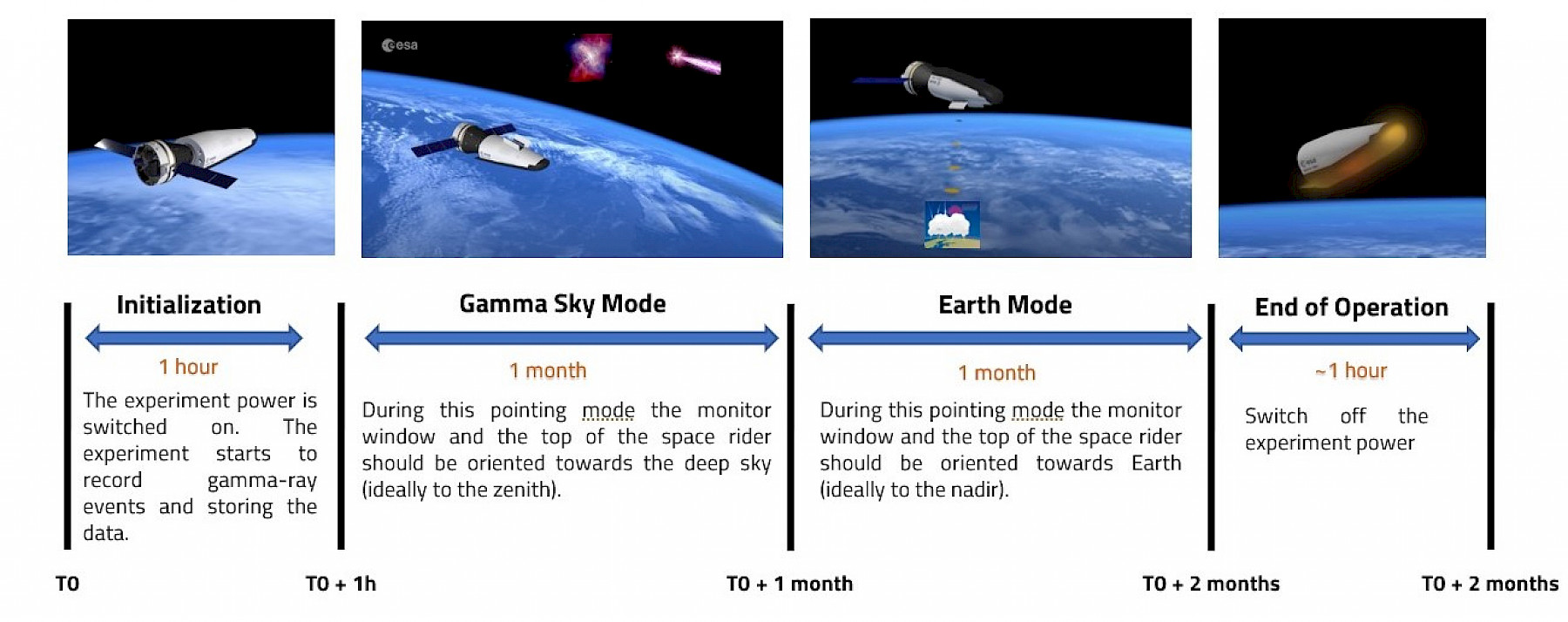Experiment led by the University of Coimbra will travel to Space in the first ESA reusable vehicle
The “Space Rider” will be launched from Kourou (French Guiana) in 2024
English version by Diana Taborda
The TGF Monitor experiment, a CdTe pixelated gamma-ray detector with polarimetric capabilities that will open new technological and scientific horizons, has just been selected to be launched in the “Space Rider”, the first reusable space vehicle of the European Space Agency (ESA).
The team is coordinated by Rui Curado Silva, faculty member of the Department of Physics of the University of Coimbra, with the participation of the Portuguese Laboratory for Experimental Particle and Astroparticle Physics (LIP), the University of Beira Interior and of the companies Active Space Technologies (Coimbra) and Advacam (Prague, Czech Republic).
According to Rui Curado Silva, if the TGF Monitor experiment is successful, it will help to "establish CdTE detectors as a technology that can be used from astrophysics to aviation safety, and to carry out new scientific measurements, in particular those related to terrestrial gamma ray flashes (TGFs)". Curado Silva explains that TGFs are "emitted by cumulonimbus clouds (clouds with large vertical development associated with thunderstorm systems) and are a concern for the health and safety of aircraft crews and passengers.
The experiment covers various topics, such as the effects of orbital radiation on CdTe detectors, "which could be used as a detection plane in high-energy astrophysics telescopes; observation of gamma emissions (particularly from the Crab Nebula) using a CdTe detector with polarimetric capabilities; scientific measurements of TGF emissions, with the possibility of measuring linear polarisation, which could help answer ongoing questions about the physical processes that generate TGF," says Rui Curado Silva.
The experiment also includes monitoring TGF emissions and evaluating the potential use of pixelated CdTe detectors as TGF monitors on aircraft. "Its use as a warning system and to determine emission levels could be a valuable contribution to aviation safety", says the researcher and FCTUC professor.
The “Space Rider” will be launched from Kourou (French Guiana) in 2024 aboard a Vega rocket. It will orbit for 2 months in an equatorial Low Earth Orbit (LEO). The TGF experiment will be installed in the Space Rider, “where it will be exposed to the Space radiation environment. It will point to deep space, allowing to record the gamma-ray emissions for example from the Crab Nebula; and also to Earth, recording TGFs”, explains Rui Curado da Silva. At the end of the mission, the “Space Rider” will land either in Kourou or in the airport of Santa Maria Island, Azores. The experiment will then be recovered and analysed.
Besides Rui Curado Silva, further team members are researchers Jorge M. Maia, José Sousa, Joana Mingacho, Pedro Póvoa, Joana Gonçalves, Gabriel Falcão, Gabriel Salgado e Miguel Moita. As for the companies involved, Filipe Castanheira, Frederico Teixeira, Henrique Neves and Sara Freitas, from Active Space Technologies, Carlos Granja, Jiri Sestak and Jan Jakubek (Advacam) are part of the team.


